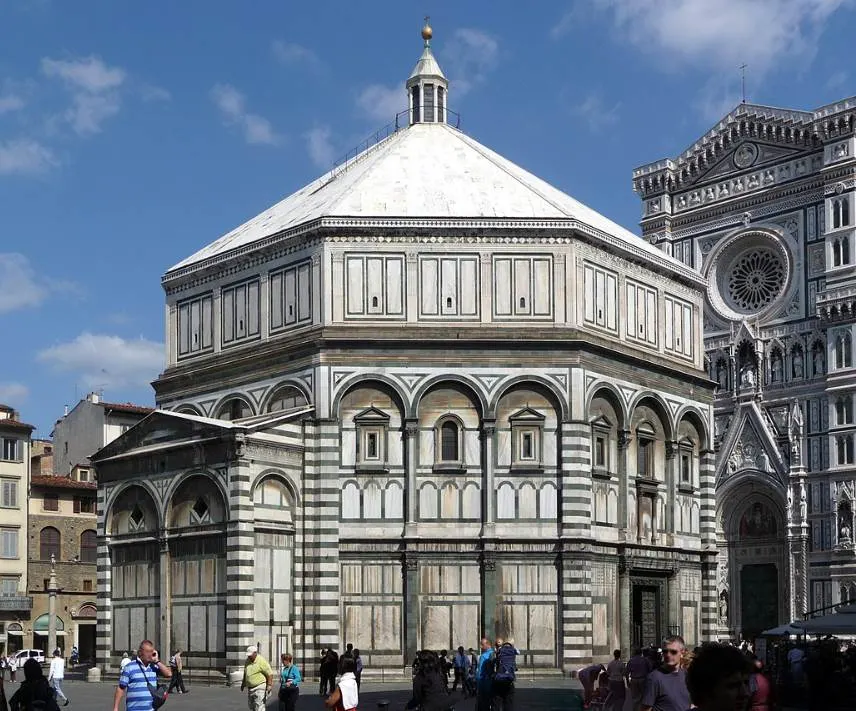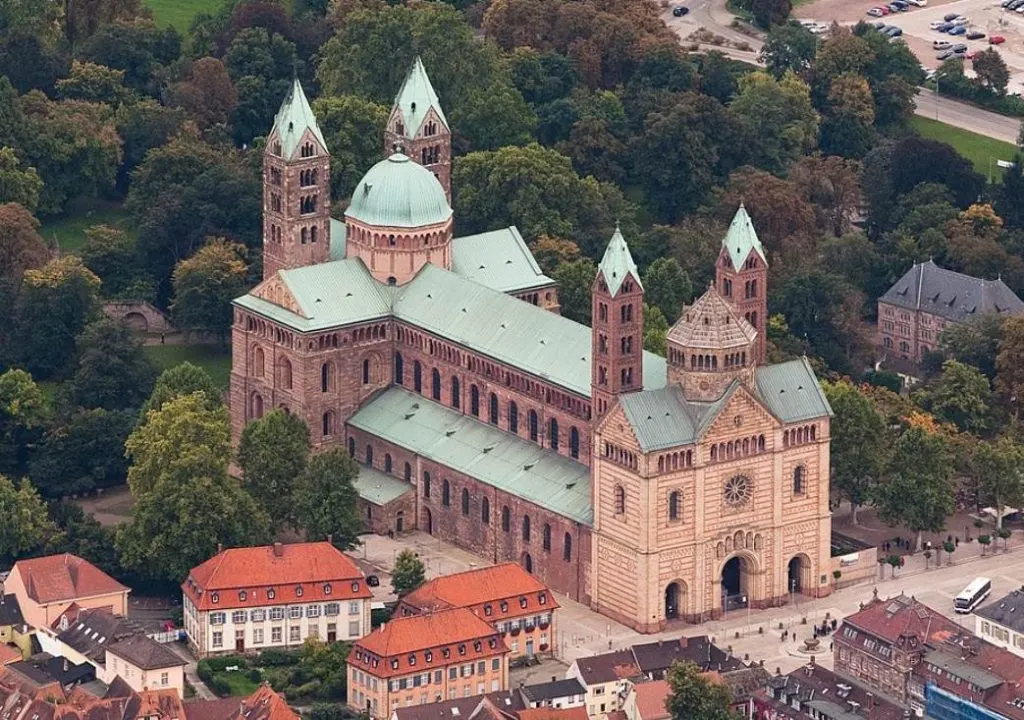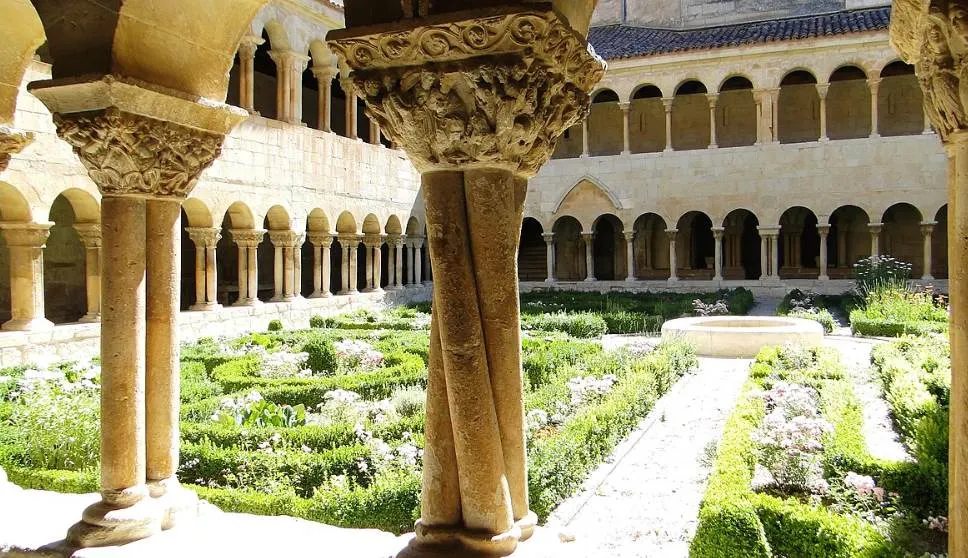Romanesque architecture is an architectural style that emerged during the early Middle Ages and which was predominant for multiple centuries all across Europe.
It remains unclear when the style emerged as the estimates range from anywhere between the 6th and 12th centuries. It was then replaced with Gothic architecture.
The main characteristics of Romanesque buildings are thick walls, sturdy pillars, massive towers, barrel vaults, and semi-circular windows. The style incorporated elements of both Byzantine and ancient Roman architecture.
The overall layout of the buildings is usually simplistic compared to Gothic buildings and often symmetrical.
Numerous castles in England were built following the Norman Conquest which is why the style is referred to as Norman Architecture there. Other Romanesque structures that were constructed include abbeys and churches.
In this article, we’ll take a closer look at some of the most famous Romanesque buildings, robust buildings that can be found in various parts of Europe.
1. Leaning Tower of Pisa and Pisa Cathedral
The Leaning Tower of Pisa is the world-famous bell tower of Pisa Cathedral. Along with the Pisa Baptistery, they form the centerpiece of Pisa’s Cathedral Square or “Piazza del Duomo.” The construction of the famous tower started in 1173 but multiple issues along the way resulted in the fact that it wasn’t completed until 1372.
Pisa Cathedral is one of the most prominent examples of Romanesque architecture in Europe. It was constructed between 1063 and 1092 in a style now referred to as “Pisan Romanesque.” The Pisa Baptistery, which is located just nearby, combines elements of Pisan Romanesque and Gothic architecture.

2. Florence Baptistery
The Florence Baptistery is one of the oldest buildings in Florence, the magnificent capital city of Italy’s Tuscany Region. It was constructed between 1059 and 1128 which means that the first stone was laid nearly 1,000 years ago. It stands just west of the equally amazing Florence Cathedral, which in turn is accompanied by the Campanile di Giotto.

The baptistery was designed in the so-called Florentine Romanesque architectural style that was predominant in and around Medieval Florence. The building is world-famous for featuring bronze doors that were designed by Lorenzo Ghiberti (1378-1455). Renaissance master Michelangelo (1475-1564) once referred to these as “The Gates of Paradise.”

3. Durham Cathedral
Durham Cathedral is one of the most prominent examples of Norman architecture in England. It’s officially known as “The Cathedral Church of Christ, Blessed Mary the Virgin and St Cuthbert of Durham” and features the typical robust towers that define Romanesque architecture. Durham Castle is located just north of the cathedral.
The construction of the cathedral started in 1093 and although large parts of the structure were completed in 1133, several additions were made in the following centuries until 1490. It’s a massive structure with a length of 143 meters (469 feet). The central tower, the tallest of the 3 massive square towers of the cathedral, reaches a height of 66 meters (218 feet).

4. Basilica di Sant’Ambrogio
The Basilica di Sant’Ambrogio is one of the most fascinating buildings in Milan. It’s located just west of the city’s historical center (which is Milan Cathedral and the Piazza del Duomo) and has a history that dates back to Roman times in the 4th century. The first church here was constructed between 379 and 386 by St. Ambrose, the Bishop of Milan at the time.
The ancient church in Milan was redesigned several times in the following centuries and was completely rebuilt in the Romanesque style in the 12th century. The smallest tower dates back to the 9th century and the tallest one was completed along with the rest of the building in the early 12th century.

5. Cluny Abbey
Cluny Abbey is a former Benedictine monastery located in the small town of Cluny just north of the French city of Lyon. The current Romanesque structure is the third building in this location. One of its predecessors was the biggest church in the world until the construction of St. Peter’s Basilica in Rome.
Unfortunately, most of the building was destroyed during the French Revolution in 1790. The tower and adjoining building are the only remnants of the Romanesque building that was constructed here in the 12th century.

6. Speyer Cathedral
Speyer Cathedral is the common name of a church called the “Imperial Cathedral Basilica of the Assumption and St Stephen.” It’s located in the German city of Speyer and near the west bank of the Rhine River in the west of the country. It has been a UNESCO World Heritage site since 1981.
The construction of the cathedral was started in 1030 and completed in 1103. It’s considered to be one of the most influential buildings in Romanesque architecture. Multiple kings and emperors were buried here and it became the largest Romanesque church in the world following the destruction of Cluny Abbey.

7. Abbey of Santo Domingo de Silos
The Abbey of Santo Domingo de Silos is a Benedictine Monastery located in the small town of Santo Domingo de Silos. This town is situated in between the major cities of Madrid and Bilbao in northern Spain. The first monastery in this location dates back to the 7th century during the Visigothic period.
The most amazing feature of this building is the two-story cloister which features rows of pillars with carvings. These relief panels and carvings feature various scenes and are considered to be some of the most amazing Romanesque artworks in the world.

8. Basilica of Saint-Sernin
The Basilica of Saint-Sernin is another medieval church that has a history dating back to the 4th century. This original church was constructed on the location of the burial site of Saint Sernin, the first Bishop of Toulouse in the 3rd century.
Most parts of the Romanesque building we see today were constructed between 1080 and 1120 but several additions were made later on as well. Apart from the remarkable Romanesque design of the church, the basilica is also renowned for the copious amounts of Romanesque sculptures that decorate its interior.

9. Maria Laach Abbey
Maria Laach Abbey can easily be described as one of the most distinctive examples of Romanesque architecture in Europe. This Benedictine abbey is located near the southwestern tip of the Laacher See or “Lake Laach” near the town of Andernach in the western part of Germany.
The building features the sturdy towers commonly found in Romanesque buildings and was constructed during the 11th and 12th centuries. It was originally known as “Abtei Laach” but was renamed “Abtei Maria Laach” by the Jesuits in 1862.

10. Sant Climent de Taüll
Sant Climent de Taüll or the Church of St. Clement of Tahull is a Roman Catholic church in the small town of Taüll. This town is located in the Catalonia region of Spain in the utmost northeastern part of the country. It’s part of a UNESCO World Heritage site called the “Catalan Romanesque Churches of the Vall de Boí.”
This particular church isn’t just the epitome of Romanesque architecture, it’s also the best-preserved of all churches in the region. It’s also remarkable that it’s uncertain when the church was constructed exactly, although we know it was consecrated in the year 1123. The six-story bell tower dominates the magnificent landscape and the interior of the church is decorated with Romanesque art.

